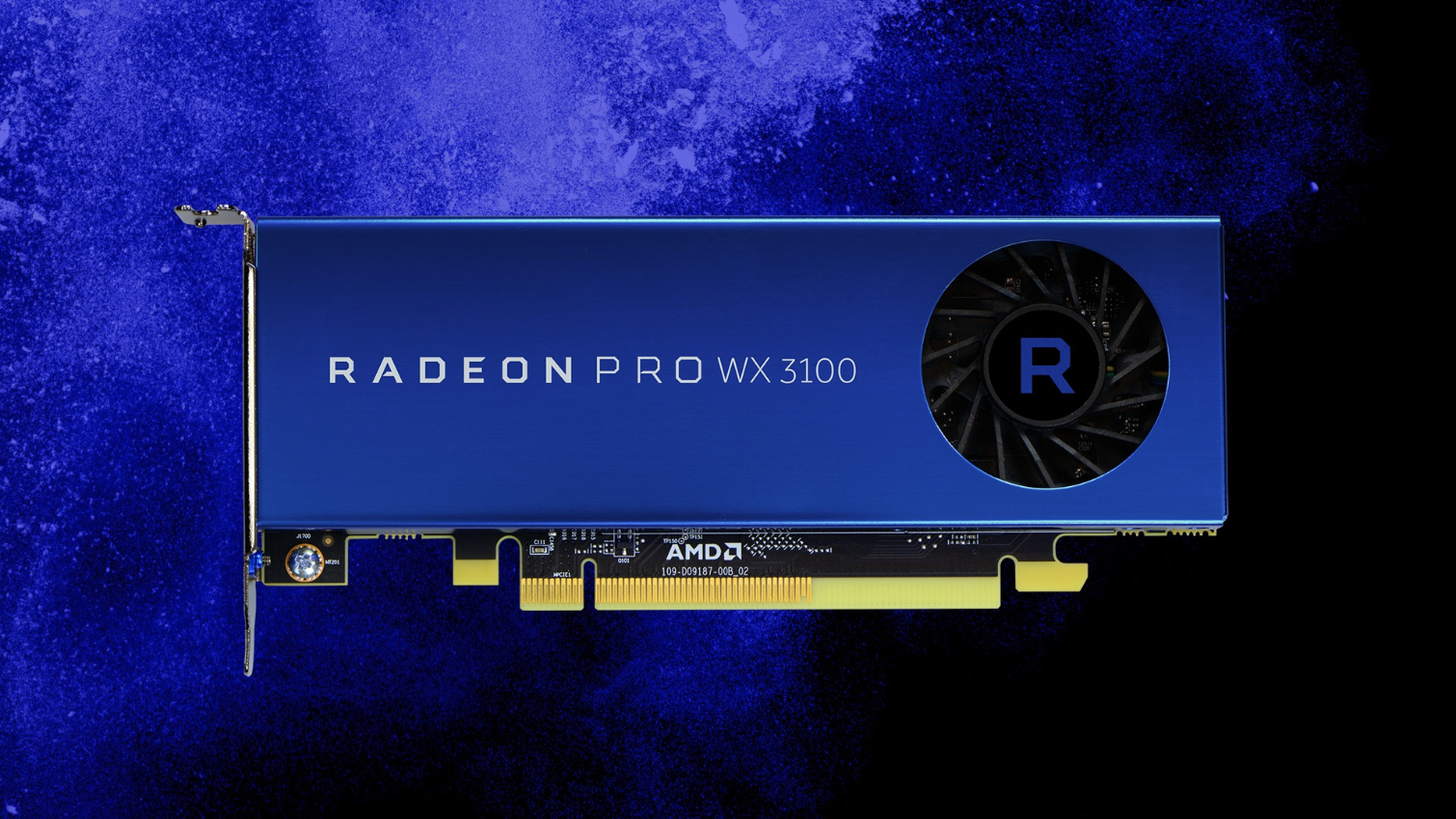AMD Announces Radeon Pro WX 2100, 3100 For Workstations
It seems like AMD is everywhere. In between releasing the refreshed Radeon RX 500 series graphics cards, revealing that Vega will debut in June, and teasing ThreadRipper processors with up to 16 cores and 32 threads, the company announced new Radeon Pro WX 2100 and Radeon Pro WX 3100 graphics cards for workstations.
Both graphics cards are based on the 14nm Polaris GPU architecture. The RX 2100 features 2GB of GDDR5 memory on a 64-bit interface; the RX 3100 doubles those figures to 4GB of memory on a 128-bit interface. They're otherwise identical, and AMD said in its announcement that both are aimed at people working in the "design and engineering, architecture, finance and media and entertainment" industries.
Here's what AMD said in a blog post about the cards' performance:
[T]hese cards are the fastest entry-level workstation cards, delivering up to 2x more performance than the previous generation AMD FirePro products2. When compared to the current entry-level offerings from the competition, the Radeon Pro WX 2100 delivers on average up to 20% faster performance than the NVIDIA Quadro P400, while the Radeon Pro WX 3100 delivers on average up to 28% faster performance over the comparable NVIDIA Quadro P600.
We haven't tested the WX 2100 or WX 3100 ourselves, so we can't speak to the veracity of AMD's claims. Even if they're accurate, you're going to pay for that improved performance: The WX 2100 is expected to cost $149 to a Quadro P400's $125, and the WX 3100 costs $199 to a Quadro P600's $178. That is comparing AMD's suggested price to Amazon's price for PNY cards, however, so those differences in price could be inflated.
Still, the improved performance could appeal to someone currently using AMD FirePro cards, or who doesn't mind paying a little extra for a 20-28% boost. AMD said the Radeon Pro WX 2100 and WX 3100 are both expected to launch in June; an exact date wasn't provided. The company also said both cards are covered by 24/7 customer support and a three-year limited warranty that can be extended up to seven years.
| Product | AMD Radeon Pro WX 2100 | AMD Radeon Pro WX 3100 |
|---|---|---|
| GPU Architecture | Polaris | Polaris |
| Stream Processors | 512 | 512 |
| Boost Clock | 1,219MHz | 1,219MHz |
| Memory | 2GB | 4GB |
| Memory Clock | 1,500MHz | 1,500MHz |
| Memory Bus | 64-bit | 128-bit |
| I/O | 2 x Mini-DisplayPort1 x DisplayPort 1.4 | 2 x Mini-DisplayPort1 x DisplayPort 1.4 |
| Slots | 1 | 1 |
| Power | <35W | <50W |
| MSRP | $149 | $199 |
Get Tom's Hardware's best news and in-depth reviews, straight to your inbox.

Nathaniel Mott is a freelance news and features writer for Tom's Hardware US, covering breaking news, security, and the silliest aspects of the tech industry.
-
Fallout4why Those two cards aren't competing with pascal...they have 2gb of v ram...trash for gaming.Reply -
Fallout4why I know they aren't but the first guy doesn't since he was comparing them to gaming cards.Reply -
waynes What is this nonsense. People in the media industry I know ate buying twin GTX 1080 Ti card, and they are still not anywhere near enough to process their footage realtime full resolution. GPU's maybe a much faster accelerator for processing odd high end video codec types, but something like the redrocket x processing array cards are far better. It would pay these companies to incorporate some higher efficiency general purpose processing array on "workstation" cards. Requires a lot less silicon than gpu's. The onboard storage of AMD's media card recent also helps, reducing the data bottleneck, but it was still an old GPU a architecture.Reply -
Novell SysOp fire phasers 5 time WRONG. You morons need to realize geforce can NOT edit 10-bit content. ONLY Quadro can. I own a P600 and others and would never buy AMD. Pro apps support CUDA and not AMD. NVIDIA also provides better drivers and support, that's why you pay MORE. They are for BUSINESSES and businesses get support that gamers do not. My P600 beats the snot out of a 1080 for h.264 transcode. The Quadro also has 4 DP 1.4, which is more than the AMD. It draws less power also and has higher clock speeds. With tax it is a $188 card.Reply
ILM use Quadro and they wrote their own software for them.
